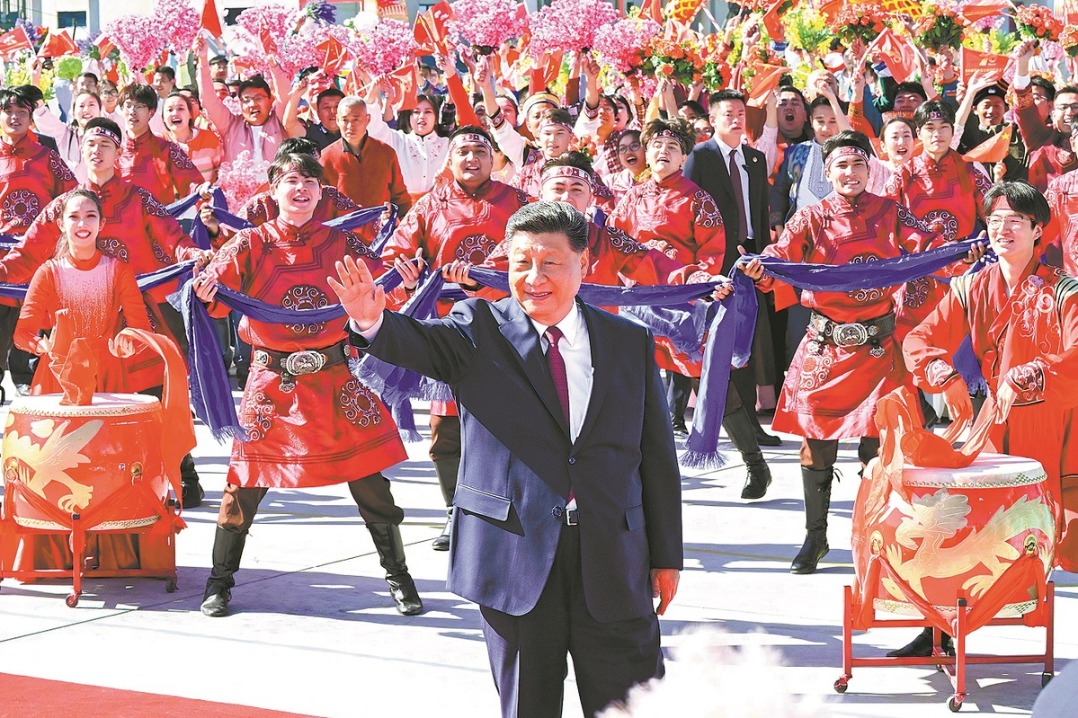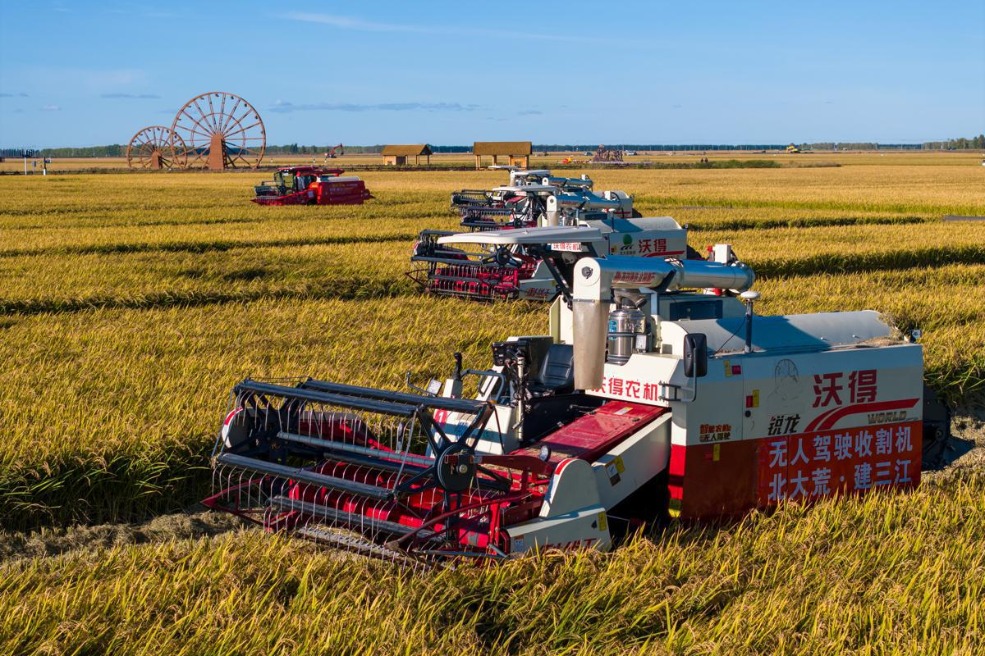New sheep combines quality wool with good meat

Due to a spike in global mutton prices over the past decade and for want of a sheep variety that can thrive on freezing plateaus, many herders in Gansu province began crossbreeding a local sheep variety that had outstanding wool-producing performance with meatier ones to increase profits.
The trend worried many breeders because it led to a regression in wool quality and threatened to ruin a variety that has strategic importance and could increase China's reliance on imported wool.
"Once the fine-wool quality is ruined, it would take huge amounts of effort to restore it," said Yue Xiangpeng, a breeding scientist in Gansu.
A recent breeding breakthrough by Yue and his colleagues from Lanzhou University has solved the problem.
The researchers, led by Professor Li Fadi, recently rolled out the Tianhua mutton sheep, a dual-purpose variety that has proved it can thrive in the cold pastures on the rims of the arid Qinghai-Tibet plateau.
The scientists said its outstanding meat yield does not jeopardize wool quality or output.
When promoted, the sheep will help revolutionize the sprawling but inefficient sheep-farming industry in the country's vast plateau regions, and even in China's neighbors, they said.
Gansu, on the northern border of the Qinghai-Tibet plateau, has the third largest number of sheep in the country, but ranks fourth by mutton output, said Yue, who joined the task force in 2014 and has been overseeing the research ever since.
One-third of Gansu's sheep population are fine or semi-fine wool varieties or their crossbred progeny, with unsatisfactory meat output potential, and developing a dual-use variety has been a local research focus for decades.
Inspired by his tutor, Li in 2008 started looking into possibilities to pool financially rewarding traits of fine wool and high meat yield in a single variety.
After extensive research, Li and his colleagues decided to crossbreed the South African mutton merino sheep — an established dual-use variety — with the local Gansu alpine fine-wool sheep.
They first conducted a few smaller hybridization experiments to test their theory before launching a sweeping hybridization experiment in Tianzhu Tibetan autonomous county, a two-hour drive northwest of Lanzhou, which is known for its plateau pastures.
Research data showed adult Tianhua rams can weigh up to 100 kilograms, and ewes 65 kg, almost on par with the South African mutton merino sheep.
Tianhua rams also produce 6.1 kg of quality wool and ewes 4.2 kg, making them an ideal replacement for the local fine-wool sheep variety and prompting the local government to formulate policies to popularize them.
The breed has significantly increased the incomes of herders, many of whom had shaken off poverty over the past decade thanks to a national antipoverty campaign.
"Herders can earn an extra 900 yuan ($124) for each Tianhua sheep they raise," Yue said.
But he said the sheep brings about more than just economic prosperity.
The fine-wool sheep that used to dominate the region are pasture-raised, sometimes straining the local environment, while Tianhua sheep can be raised in a barn or a confined lot thanks to their improved disease resistance.
"Also, because its productivity has increased, raising one Tianhua sheep is equivalent to raising two or even three original ones. In this way, many herders have reduced the size of their flock," Yue said.
The sheep was approved last month for commercial production by the Ministry of Agriculture and Rural Affairs, alongside 20 other homegrown varieties of livestock, poultry, silkworms and 17 newfound animal germ plasms — the genetic resources critical to breeding.
It is part of a broader effort by government and academia to develop domestic food species that the country has full control over.





































